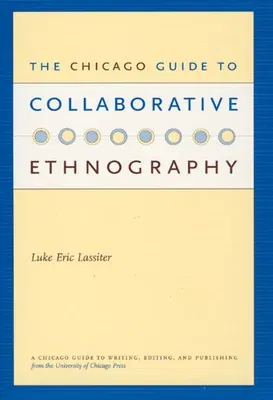Collaboration between ethnographers and subjects has long been a product
of the close, intimate relationships that define ethnographic research.
But increasingly, collaboration is no longer viewed as merely a
consequence of fieldwork; instead collaboration now preconditions and
shapes research design as well as its dissemination. As a result,
ethnographic subjects are shifting from being informants to being
consultants. The emergence of collaborative ethnography highlights this
relationship between consultant and ethnographer, moving it to center
stage as a calculated part not only of fieldwork but also of the writing
process itself.
The Chicago Guide to Collaborative Ethnography presents a historical,
theoretical, and practice-oriented road map for this shift from
incidental collaboration to a more conscious and explicit collaborative
strategy. Luke Eric Lassiter charts the history of collaborative
ethnography from its earliest implementation to its contemporary
emergence in fields such as feminism, humanistic anthropology, and
critical ethnography. On this historical and theoretical base, Lassiter
outlines concrete steps for achieving a more deliberate and overt
collaborative practice throughout the processes of fieldwork and
writing. As a participatory action situated in the ethical commitments
between ethnographers and consultants and focused on the co-construction
of texts, collaborative ethnography, argues Lassiter, is among the most
powerful ways to press ethnographic fieldwork and writing into the
service of an applied and public scholarship.
A comprehensive and highly accessible handbook for ethnographers of all
stripes, The Chicago Guide to Collaborative Ethnography will become a
fixture in the development of a critical practice of anthropology,
invaluable to both undergraduates, graduate students, and faculty alike.

